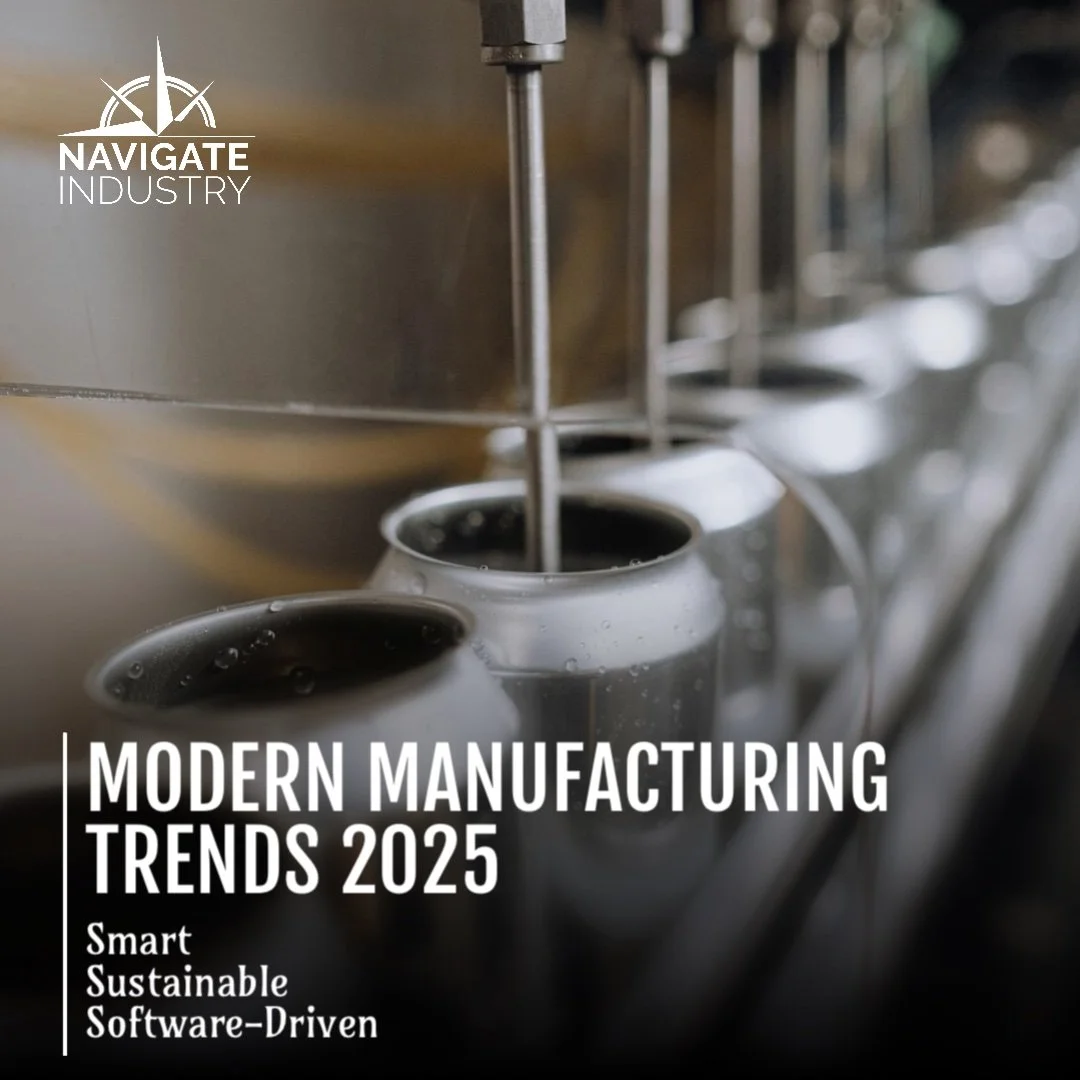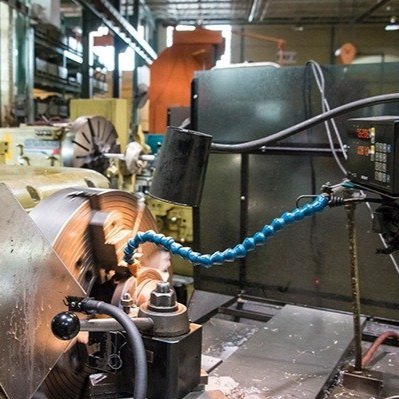Robotics and Computer Monitoring Create Engineering Design Challenges
/Special project engineer Edward Hazinski has helped his Plast-O-Matic Valve customers solve reliability and efficiency issues for almost four decades as robotics and computer monitoring advancements continue to change the face of modern manufacturing and create engineering design challenges.
By Michelle Segrest, Navigate Content, Inc. - Reporting for Efficient Plant Magazine
Edward Hazinski vividly remembers the first time he walked into a manufacturing facility. “It was the late 1970s and it impressed me that there were dozens of operators turning handles, assembling parts, and cranking knobs on all the machinery,” he said.
Now, after nearly four decades working in manufacturing as a design engineer, the general manufacturing plant looks much different. “Now you see a few guys sitting in a control room that looks something like a space ship,” he explained. “Everything is automated. Robotics are everywhere. Now, practically anything that is manufactured is controlled by computers.”
Hazinski is the special-projects engineer at Plast-O-Matic Valve Inc. in Cedar Grove, NJ. In addition to inventing and designing new equipment, he also spends a lot of time visiting his customers’ manufacturing plants to help them solve problems with their valves and other equipment. As his experience and knowledge have grown, so have the capabilities of general manufacturing.
For example, the advent of CNC (computer-numeric control) machining has changed the course of manufacturing, along with electronics and remote monitoring. He witnessed this in a recent tour of the Newark, NJ, Budweiser plant.
“It was amazing. This is a huge facility with things moving in every direction,” Hazinski said. “There are bottle caps moving down an assembly line so fast it seems like they are coming out of a machine gun. All these machines are running, and there is no one in the building. You see two guys down at one end and another two guys at the other end. Everything is running by itself and monitored remotely. This type of manufacturing amplifies the need for high equipment reliability.”
However, Hazinski doesn’t think the human element will ever be completely eliminated, even in highly automated plants. “Even at the Budweiser plant they were looking for mechanical and computer engineers and programmers,” he said. “These highly-skilled positions are important to have so that all the advanced technology can be controlled.”
Plast-O-Matic designs, engineers, and manufactures thermoplastic valves and controls for the chemical, water, wastewater, and semiconductor industries. The corrosive-liquid markets use these products for the control and flow of various acids, solvents, chlorine, hydrogen peroxide, ethylene glycol, seawater, detergents, and a variety of other aggressive fluids.
“Most people come to us because whatever they are moving, they can’t use metal,” Hazinski explained. “The metal will either contaminate the fluid or be attacked by the fluid. The equipment we design and engineer needs to last 20 or 30 years.”
Background & Experience Designing Industrial Manufacturing Equipment
Hazinski earned an Associate degree in applied science and machine-tool technology from the City College of New York, and then earned a Bachelor’s degree in mechanical engineering from the New Jersey Institute of Technology, Newark. While attending school, he worked in manufacturing facilities fine-tuning his passion and skills so he could work with manufacturing equipment.
The majority of his almost 40-year career has been spent designing industrial equipment. He now specializes in flow-control equipment and was the inventor of many products, including the Ultra-Pure product that was designed for the semiconductor industry. It uses ionized water to clean circuit board chips that are used for electronic equipment.
“We have customers who need the water to be absolutely clean with no metal ions or contamination of any kind,” he said. “If just a couple of molecules line up, [they] can jump the circuit and ruin the board. We have to have things tested down to micrograms per square meter of contamination on the inside of our valves. Some liquids that pass through valves are so corrosive that they can even melt some plastic materials. But plastic is better than metal in these cases.”
Designing New Equipment & Troubleshooting Factory Breakdowns
Every day is different for Hazinski. He takes care of the clean room on his company’s semiconductor ultra-pure line daily, but spends the rest of his time designing new equipment and troubleshooting factory breakdowns. Even with specific and extensive testing performed on site, if something goes wrong once the equipment is installed at a plant, Hazinski is called to find out what went wrong.
“I love inventing new things and figuring out solutions to problems,” he said. “It’s my kind of thing to think it through and overcome issues. A lot of times I’ll be asked to solve a problem and a new product will result from that. Other times, I may have an idea for a new piece of equipment, and we just try it out. There’s no real formula. Sometimes people just have a specific problem, and I enjoy taking the challenge to try and create something new. We are one of the few flow-control companies that perform specialized work like this.”
Hazinski knows that good preventive maintenance procedures can translate to reliable and efficient equipment. So he takes on the responsibility of writing the installation and maintenance procedures and instructions for each piece of new equipment he designs.
“A lot of companies have equipment that is running just fine, so they ignore the general maintenance,” he said. “Then, for no particular reason, the equipment will get jammed up or it will leak, and the operators are left to wonder why that happened. Usually it is because it was installed and worked fine for years, and they just assumed it would be okay indefinitely. That is really not the case with anything. The best reliability tip I can ever give is to follow the preventive-maintenance procedures for the best success.”
Evolution of Industry & Manufacturing
The differences Hazinski has seen through the years in the various manufacturing plants he visits are not limited to the automation and equipment.
“There is not really a shortage of engineers as the workforce ages, but I do find that the younger people are far more computer-oriented,” he said. “There is much less hands-on kind of work. Almost everything is attached to a computer. This was not the case in the past. The real hands-on work with tools is not taught much to the younger guys. The skills set of the general manufacturing plant worker has changed dramatically—some of the operators are engineers.”
He cited an example from a New York foundry that uses some of the equipment he has designed.
“Our valves are all over the place in this plant,” he said. “Most of them are under the floor, and you must lift a floor panel to access them. There was a leak with one of them. Everyone was dressed up like astronauts from head to toe like you see in a clean room or an operating room. Every single person had a lot of training and education. I wanted to take off my gloves to see if I could feel where the leak was coming from and I thought they were going to drag me out of there for even suggesting this. It’s difficult to diagnose something when you can’t touch it.”
Hazinski said automation, electronics, and instrumentation are only going to increase in capability, technology, and complexity as manufacturing moves forward.
“For the big places, I just see more and more automation and the skill level of the people is constantly increasing,” he said. “People without training and education are being left out of the highly technical jobs. In some plants, there are even automated forklifts, and lots more robotics. It takes years to design these systems and precision is so important.”
But the human element will continue to be vital, he predicts.
“Quality control and the need for progress of innovation will ensure that all humans in manufacturing facilities are not replaced by robots,” he said. “The quality-control professionals want to know what happened when something goes wrong, and we still need skilled engineers to figure out the solutions.”
Hazinski’s Top 5 Tips for Effective Reliability
Maintenance is always important for breakdown-free operation.
Proper training for the people involved with the equipment will prevent downtime.
Keep ergonomics in mind so workers do not get fatigued any more than is absolutely necessary.
Use the proper safety equipment.
Always supply workers with the proper material-handling equipment to avoid accidents.
Michelle Segrest is President of Navigate Content, Inc., a full-service content creation firm. She has been a journalist for more than three decades and specializes in covering the people and processes that make a difference in the industrial processing industries. Contact her at michelle@navigatecontent.com




















